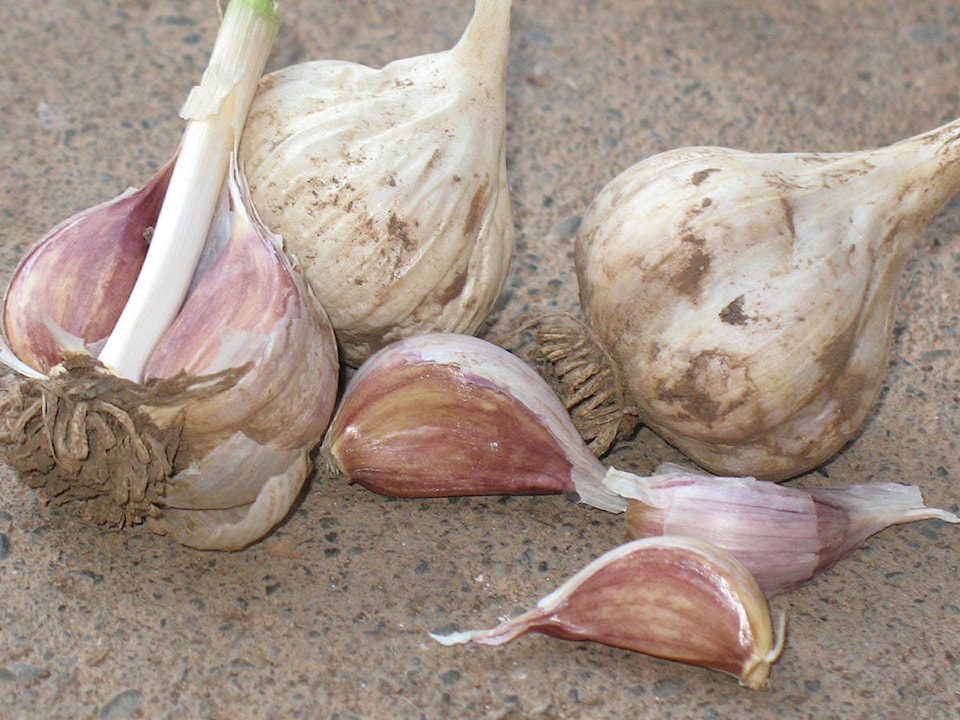By Mary Lowther
When garlic sprouts up in spring I’m glad I took the time the previous October to plant it. Although garlic can be planted in early spring, the best and biggest garlic is sown now and takes about nine months to produce decent bulbs that can keep for several months in a cool, airy place. Garlic originated in the Fertile Crescent, the area of ancient Mesopotamia of the Middle East, and it hasn’t changed much since then.
Fall-sown garlic develops roots that remain alive throughout the winter, allowing the sprouts to get a head-start the following spring. Last year I sowed some in September as I’d read some folks do, but our unusual spring with its early sunny days and late deluge must have caused the rotting because most of those went moldy. Some of my October-sown garlic also went moldy so I’m hedging my bets this year and sowing the whole crop this month, but they’re going on the sunny side of the house.
Aside from its ability to turn a ho-hum meal into an epicurean delight, garlic is such a healthy food that throughout ancient history was mainly used for health benefits. Many Europeans take garlic to ward off illnesses. My son-in-law from Belarus eats raw garlic for that reason, but I like him anyway. Jo Robinson writes in her book, Eating on the Wild Side, that researchers learned that garlic’s most active ingredient, allicin, is formed when the garlic clove is crushed, allowing an enzyme to combine with a protein to create this compound. This enzyme that creates allicin is destroyed by heat, so if garlic is cooked right away, we do not get the health benefits. If we crush garlic and let it sit for 10 minutes before heating it, the enzyme will have had time to completely develop allicin and cooking will not then destroy allicin.
To grow garlic, separate the cloves from the bulb, gently, and plant each clove about eight inches apart with the flat, root side down and the pointy end up. If it’s planted the other way around, it expends too much energy sending the stalk down and then up, so the bulb is smaller. Plant the cloves about three inches deep and check them after the first few rains because they have a tendency to get washed upward. Also, a few of them must get pulled out by some varmint because I’ve found them lying on their side above ground. I’m not naming any names, but the Stellar Jays look guilty. You’d think the sunflower seeds and bread I put out for them would be enough.
The garlic in the picture was grown from seed that develops at the top of the stalk, but it took three years to get big enough to separate into cloves. They’re still too small to eat, but maybe they’ll be bigger next July.
Here’s a tasty recipe for pesto, using up the last of the basil and a bunch of garlic that I use on vegetables. David says he doesn’t like it, heavy sigh.
Pesto
1 cup packed fresh basil leaves
½ cup grated Romano cheese
2 T. olive oil
¼ cup melted butter
3 large cloves fresh garlic, crushed
Directions: place basil, cheese, oil, butter and garlic in blender and pulse until you have a coarse puree. Mix into spaghetti or vegetables according to taste, adding more cheese as you like.
Please contact mary_lowther@yahoo.ca with questions and suggestions since I need all the help I can get.
